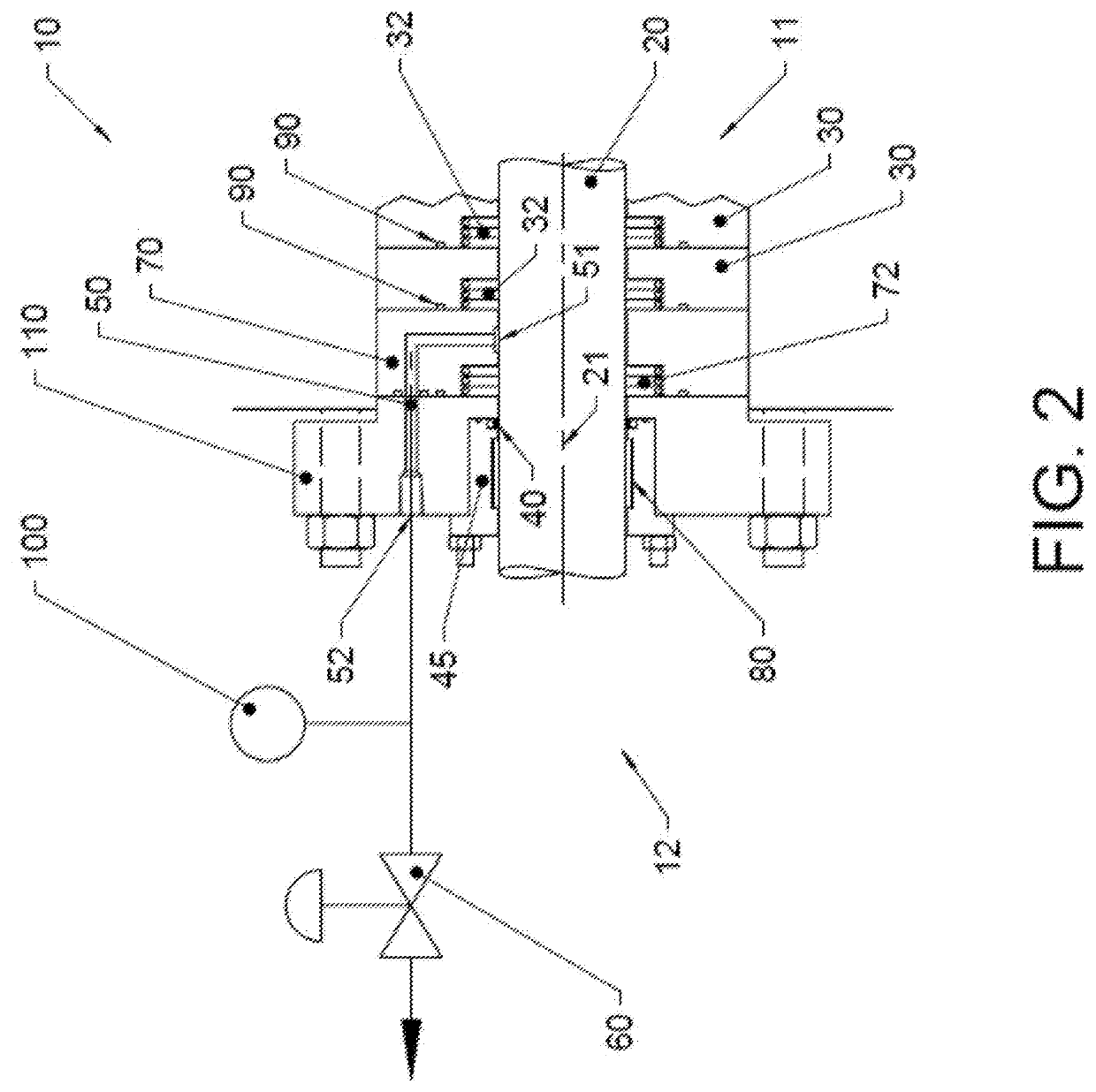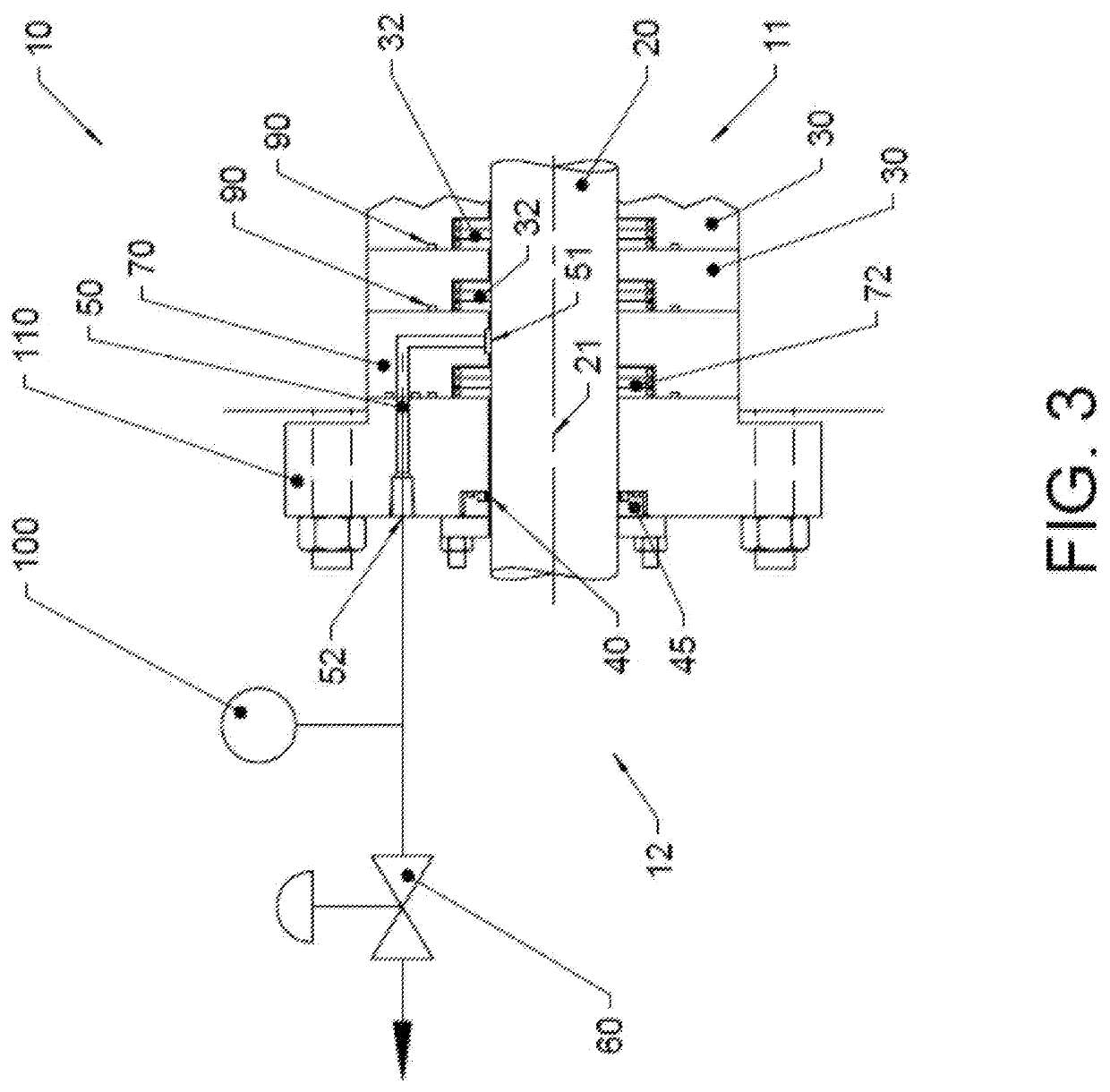Seal Assembly for Reciprocating Compressor
a compressor and seal assembly technology, applied in the direction of engine seals, pump parameters, pump components, etc., can solve the problems of leakage, improper sealation of rod packing, environmental contamination hazards, etc., and achieve the effect of reducing compressive load
- Summary
- Abstract
- Description
- Claims
- Application Information
AI Technical Summary
Benefits of technology
Problems solved by technology
Method used
Image
Examples
example
[0070]Seals wear over the course of their useful lifetime and eventually begin to leak once too much material is lost. The amount of material lost during operation is a function of both contact pressure and the total distance over which the seal has traveled. The higher the contact pressure and the greater the total sliding distance, the higher will be the total loss of material. This loss of material eventually results in the seal ‘wearing out’. The sliding distance is equal to the velocity of the sliding multiplied by the total time, so the total amount of material lost during operation per unit time is linearly related to the contact pressure (P) and the velocity (V). The higher the PV, the faster the seal will wear out.
[0071]To increase the amount of time a seal can remain in service, either the velocity can be reduced, which may not be possible for a given application, or the contact pressure can be reduced. The contact pressure is primarily a function of the pressure different...
PUM
 Login to View More
Login to View More Abstract
Description
Claims
Application Information
 Login to View More
Login to View More - R&D
- Intellectual Property
- Life Sciences
- Materials
- Tech Scout
- Unparalleled Data Quality
- Higher Quality Content
- 60% Fewer Hallucinations
Browse by: Latest US Patents, China's latest patents, Technical Efficacy Thesaurus, Application Domain, Technology Topic, Popular Technical Reports.
© 2025 PatSnap. All rights reserved.Legal|Privacy policy|Modern Slavery Act Transparency Statement|Sitemap|About US| Contact US: help@patsnap.com



